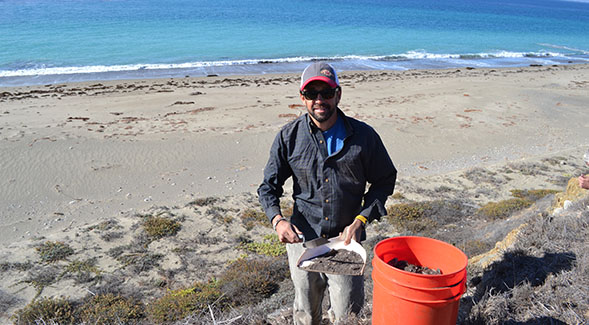Island Extinctions in the Pleistocene? Don't Blame Us
Scientists find the arrival of humans to uninhabited islands during the past 2.6 million years had minimal impacts on biodiversity loss, contrary to previous beliefs.

“If we only look at what has changed over the past 50 years, it doesn’t help us understand how we have come to the ecosystems today.”
When an international group of anthropologists and paleontologists gathered for a workshop in Australia to share global datasets for the first time, they discovered island extinctions that had happened across the world were not due to human arrivals in the Pleistocene Epoch.
The resulting research paper was published this month in Proceedings of National Academy of Sciences. The researchers examined archaeological and paleontological records of islands around the world inhabited by humans and their ancestors over the past 2.6 million years. They found humans weren’t always destructive agents and their arrival often had minimal impacts on biodiversity loss.
“Based on classic cases of island extinction from the more recent past, we expected that mass extinction should shortly follow island colonization,” said associate professor Julien Louys with the Australian Research Centre for Human Evolution. “However, when we examined the data, there were very few cases where this could be demonstrated.
“Even in cases where there was a close link between human arrival and island extinctions, these could not be disentangled from records of environmental change brought about by global climatic events and changing sea levels,” Louys said.
San Diego State University professor of anthropology Todd Braje took part in the 2017 research workshop led by Louys and senior researcher professor Sue O’Connor of the Australian National University.
“Historically, the story has been that when humans arrived they were these destructive predators who immediately altered island environments,” Braje said. “It‘s been one of the justifications for linking humans in the Americas with the extinction of megafauna like mammoths and mastodons. In the study data, we found much the opposite.”
Braje has been doing research for the past twenty years on California’s Channel Islands, which were colonized by humans at the end of the Pleistocene.
During the Pleistocene, the human condition was much different than today.
This study asks important questions that lay the groundwork for environmental change in the future. Climate change and overhunting as a cause of island extinctions have been hotly debated over the past 40 years, however a review of historical data suggests there could be a complex combination of issues leading to extinction.
Imperiled ecosystems
Island ecosystems are some of the most at-risk in the world today and understanding the past impacts of humans on these environments is critical to safeguarding them for the future.
“By studying the cases where people lived on islands for thousands of years without tipping these fragile ecosystems off balance, we might gain valuable insights into how they can be better managed today,” Louys said.
Understanding why and how climate, ecosystems and biota have shifted over time helps anthropologists think about how to address the damage done, Braje explained.
“If we only look at what has changed over the past 50 years, it doesn’t help us understand how we have come to the ecosystems today,” he said. “Why do the landscapes and seascapes look like they do today? We can understand the long-term, entangled human environmental change that is creating the present. By understanding the deep history, we can decide what we want these places to look like in the future. We have a choice about effective resource management and how to build sustainable systems.”
“Lessons learned here offer a message of hope, that humans are not always to be blamed for all the destruction. We can find ways to live sustainably in a fragile ecosystem.”
The research was funded by the Australian Research Council Laureate Fellowship for O’Connor and the Wenner-Gren Foundation.


